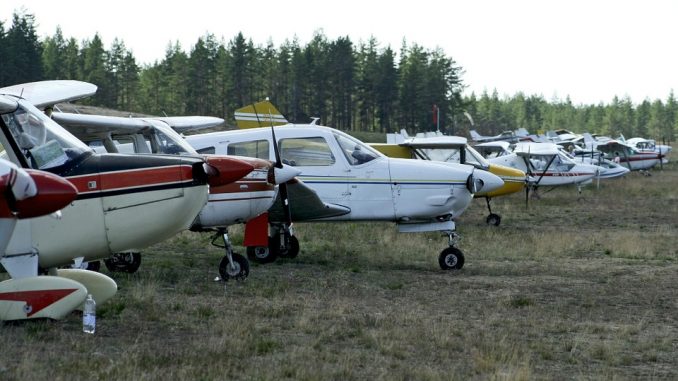
Here are 5 steps to getting a handle on flying weather when planning your next trip:
- Get the big picture
- Zero in on your route of flight
- Metar, TAF, PIREP, AIRMET, SIGMET, NOTAM, Winds Aloft
- Plan your flight
- Make the go/no-go decision
Let’s take a closer look at each step of the process.
- Get the big picture. Even if you are planning a last minute trip, you should at least have a general idea of the major weather features and what’s been happening. What’s that? You don’t pay attention to the weather unless you are planning a flight? Well my friend, you need to change your ways! So says the meteorologist. But seriously, take a look at the sky, recall the past 24 hours, flip on the local television news to check out the weather forecast and yes, even the Weather Channel if you have to. What you are looking for is the big picture. Where are the fronts, the jet stream, centers of high and low pressure and other large-scale weather features that could affect your flight.
- Zero in on your route of flight. Now that you have a good foundation, it’s time to zero in on what the weather is doing and what it is expected to do where you are going to fly. No need to pay too much attention to that cold front approaching the Oregon coast when your trip takes you from Tampa to Tallahassee.
- Metar, TAF, PIREPS, NOTAMS, Winds Aloft. Ok, now we’re getting down to business! This is where you take the background information you have gathered and add all the specific information you need to plan your flight. When you call a Flight Service (FSS) briefer and ask for a standard briefing (or get a briefing on your favorite EFB), they will give you (not necessarily in this order) the latest reported weather at your points of departure and arrival plus forecast weather for those locations (Metar & TAF). In between those points, you’ll get any weather reports from other pilots in the area (PIREP) plus weather conditions that could prove hazardous to aircraft operations (AIRMET & SIGMET). Knowing the reported surface wind is great, but since you are flying “aloft,” the wind speed and direction (plus temperature) for the altitudes at which you are planning to fly is very helpful information. Instrument approach out of service? Taxiway closed? Those non weather-related but important operational details are covered by NOTAMs.
- All of this information can also be obtained in a briefing online on ADDS (Aviation Digital Data Service). It contains tons of valuable data.
- Make your go/no-go decision. This should be based on your personal minimums, experience, ratings, type of aircraft and equipment onboard. If planning a VFR flight, a FSS briefer will advise early on if “VFR flight is not recommended.” This advice should be taken seriously! That means unless you can safely make the trip IFR (and are properly rated and current) you probably shouldn’t go. It’s amazing to me whenever I read an accident report of continued VFR into IMC where the pilot was cautioned against making the flight VFR! Speaking of IFR planning: HOW bad the weather is can make a difference because all IMC is not created equal! Marine layer stratus in Southern California is usually shallow and smooth with plenty of VFR alternates not too far away. A Midwestern frontal system with embedded thunderstorms, however, is a whole different beast.
- Plan your flight. You probably already have an idea of which route you are going to take. Now is the time to make any adjustments for weather. That could mean a change in your route to avoid a TFR or expected turbulence or a change in altitude to take advantage of a stronger tailwind. Don’t forget to adjust your heading and groundspeed! Just one of the many benefits of membership in AOPA is the free flight planning software they offer. I have used it many times in the past for VFR flight planning and have found it to be excellent! Of course, the flight planning and in-flight evaluation tools contained in most EFBs (Foreflight, WingX, FlyQ, etc) have been a game changer in recent years.

Leave a Reply